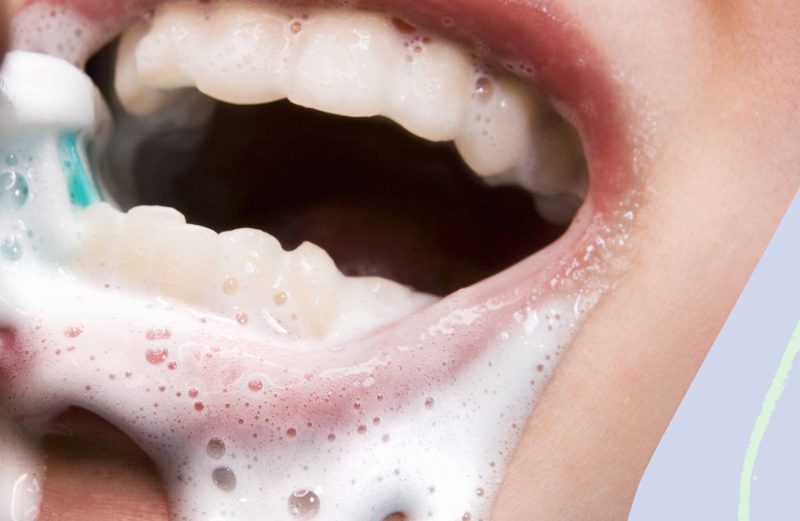Baking soda is scientifically known as sodium bicarbonate (NaHCO3). It is a fine, white powder with almost innumerable household uses. Baking soda can do a lot more than make bread rise. One of the baking soda most popular uses is whitening teeth. But is it as safe and effective as regular toothpaste?

Here’s a look at the benefits and limitations of using baking soda on your teeth, and how to use it safely to remove plaque and oral bacteria.
Table of Contents
Does baking soda whiten teeth?
Yes, it does whiten. While baking soda can’t protect your teeth from cavities as effectively as a fluoride toothpaste can, it’s still considered a good cleaning agent for your teeth.
In addition, toothpastes containing baking soda have been shown to have antibacterial properties, which can help protect your teeth from decay.
What are the benefits?
Here’s what we know about the benefits of using baking soda as part of your dental hygiene regimen.
Reduces plaque and gingivitis:
Biofilms are colonies of bacteria that attach to the surface of your teeth and eventually cause problems like gingivitis and cavities. Plaque is one example of a dental biofilm.
So, when you brush, grains of baking soda disrupt that biofilm, reducing the bacteria count and helping to prevent damage to your teeth and gums.
May reduce bacteria
Some harmful bacteria need more acidic conditions to thrive in your mouth.
A 2017 study showed that when you rinse your mouth with a baking soda and water solution, the pH in your mouth increases, making it less acidic. As a result, using baking soda as a toothpaste may make it harder for cavity-causing bacteria to multiply in your mouth.
Whitens teeth
Baking soda has natural whitening properties and has been shown to be effective at removing stains on your teeth and whitening your smile. That’s why it’s a popular ingredient in many commercial toothpastes.
Numerous studies have shown that baking soda is a mild abrasive that has the ability to remove stains from the outside of your teeth.
Is a fluoride-free option
Too much fluoride can be toxic, especially to children under 6 years old. However, it’s important to note that fluoride toxicity is rare, and the risks are only a concern when a very large amount of fluoride is consumed.
Fluoride toxicity can cause pain, vomiting, diarrhea, kidney, and heart problems. For that reason, many people prefer a toothpaste, like baking soda, that’s free of fluoride and the risks of toxicity.
How to use it to clean your teeth?
To brush your teeth with baking soda, you’ll need the following:
- a toothbrush
- a small bowl or shot glass
- baking soda
- water
Instructions
- First, mix equal parts baking soda and water in a small bowl until you’ve created a paste.
- Dip your toothbrush into the soda mix and brush in gentle circles, making sure you cover each tooth thoroughly with the paste.
- Keep brushing for around a minute.
- Finally, when you’re done, spit out the baking soda and rinse your mouth until your teeth are grit-free and shiny.
Some people recommend adding lemon juice or apple cider vinegar to the mix to increase the whitening power of the baking soda, but these blends may not be a good idea.
The acidity of lemon juice and vinegar may damage the surface of your teeth and leave you vulnerable to cavities.
If you want the best of both worlds. The polishing power of baking soda and the minty flavor of toothpaste. There are plenty of commercial toothpastes available with baking soda as an ingredient. Check out some of which here.
Multiple studies show that these toothpastes are better at removing plaque than toothpastes that don’t contain baking soda.
Products containing hydrogen whiten your teeth by oxidizing yellow and brown stains on the surface of your teeth. The strongest peroxide products are used in dentist offices, as certain steps need to be taken to protect your tongue and gums from the corrosive effects of the hydrogen peroxide.
There’s some evidence that natural remedies like coconut oil, lemon peel, and activated charcoal may be effective teeth whiteners. However, it’s important to talk to your dentist to be sure these treatments are safe for your teeth.
The bottom line
In conclusion, the best way to indulge the benefits of baking soda for whitening teeth is to get a whitening toothpaste that contain baking soda as a main ingredient. You will benefit from the polishing power of baking soda and the minty flavor of toothpaste.
For more information, don’t hesitate to drop a comment below.




